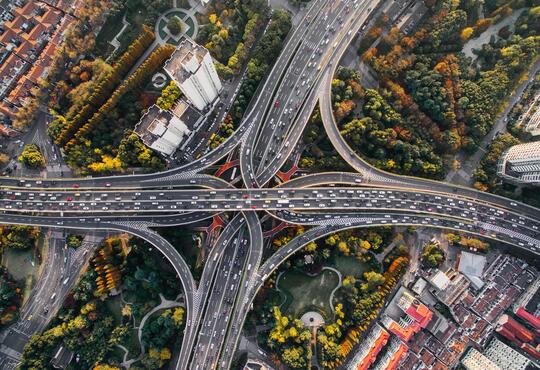When Hurricane Dorian battered the Bahamas in the Fall of 2019, Waterloo-based satellite imagery startup SkyWatch was quick to assist the reeling nation. The company gave relief agencies emergency access to its vast satellite image datasets. This enabled these organizations to survey the damage in real-time and coordinate their response accordingly.
“Relief agencies aren't bottomless pits of resources,” says SkyWatch co-founder and Waterloo Math alumnus Roland Sing (BMath ’85). “They want to be able to target their resources quickly and efficiently to the areas that need help the most. With the satellite data that we were able to provide daily, they were able to figure out where to allocate their resources and where to send their rescue crews.”
This wasn’t the first time SkyWatch’s solutions proved crucial in a disaster. Earlier in 2019, they provided data to relief agencies in Brazil when the Brumadinho dam collapsed. Yet, disaster relief is just one of the many ways the company is helping protect our planet and its people.
Making satellite data usable, accessible, and affordable
 Sing, who worked at IBM in full time and contract roles for over two decades before leaving in 2011, met his SkyWatch co-founders, James Slifierz and Dexter Jagula, at the Toronto NASA Space Apps Challenge Hackathon in 2014. The three worked on the same team to develop a data-feed application for NASA’s space telescopes. The app, called Supernova, impressed NASA. It was awarded first place in the Toronto event and was subsequently entered into the world competition, which it won as well.
Sing, who worked at IBM in full time and contract roles for over two decades before leaving in 2011, met his SkyWatch co-founders, James Slifierz and Dexter Jagula, at the Toronto NASA Space Apps Challenge Hackathon in 2014. The three worked on the same team to develop a data-feed application for NASA’s space telescopes. The app, called Supernova, impressed NASA. It was awarded first place in the Toronto event and was subsequently entered into the world competition, which it won as well.
“After the hackathon we thought, ‘if NASA likes what we’re doing so much, perhaps there’s a business here,’” recalls Sing.
Soon after, Slifierz, Jagula, and Sing launched SkyWatch. Initially, they focused on further developing their space telescope application, but after a year, pivoted to Earth observation data, recognizing a need for more easily accessible data.
“Our main objective was to make Earth observation data accessible, usable and affordable,” explains Sing. “NASA data is free and open to everybody, but it's typically in formats that are really difficult to use. The data from commercial satellite providers is similarly difficult to obtain. Before we came along, you'd have to go around to each different satellite provider, fill out order forms and then pay exorbitant prices to get your data.”
Today, SkyWatch aggregates earth observation from data industry-leading sources into a single, easy-to-use platform and provides clients with powerful APIs, enabling them to develop cutting-edge applications.
Many environmental applications
While SkyWatch’s products are widely employed across a range of industries, from agriculture to insurance, a number of its clients use them to solve pressing environmental problems. One client is capitalizing on SkyWatch data to monitor the health and vitality of forests and guard against invasive insect infestation. By applying machine learning algorithms to the data, they can detect variances in tree health, identify infested trees and then send out crews to address the problem areas.
Other clients are employing SkyWatch tools to prevent forest fires, monitor water quality and protect infrastructure.
“Groundwater pollution and wildfires can occur from damaged infrastructure. And all that could go unnoticed before it's too late,” says Roland. “With satellite imagery, you can monitor that infrastructure and detect changes. Because everything is geo-referenced, you can send people to the specific location and mitigate the problem.”
And Sing believes some of the most exciting environmental applications are yet to come. In the future, it will be possible to use satellite data as an input in climate models, both validating them and improving their accuracy. At the same time, SkyWatch’s satellite data might be employed to hold stakeholders accountable for pollution.
“There are companies that are measuring greenhouse gas emissions and pinpointing those things to specific latitudes and longitudes on the globe,” says Sing. “The data that we can provide using satellites can enhance their work. You may see an area where there's a high concentration of carbon or methane in the atmosphere. With a high-resolution satellite image, you can actually see what’s happening there and what the possible cause is.”
Summarizing these exciting developments in satellite imagery, Sing says, “the future will be incredible.”






